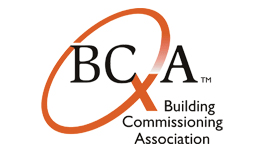The Building Commissioning Association (BCA) officially released its New Construction Building Commissioning Best Practices. This publicly available document is applicable to most building types and distills the long list of guidelines, and longer list of tasks, into easy-to-navigate activities that represent the ideal commissioning process.
This document represents a collaborative effort on the part of several leading experts in the field of commissioning. Bruce Pitts of Wood Harbinger, Inc and Karl Stum of Summit Building Engineering spearheaded this two-year effort.
According to its authors, it aims to promote commissioning in the marketplace by defining the qualities and characteristics of best commissioning practices and to raise professional standards by establishing a benchmark against which the market can gauge quality and professionalism, and which the BCA can use to objectively evaluate other commissioning initiatives, including their own.
“I am proud of this Best Practices document,” stated BCA President Mark F. Miller, PE, CCP. “A unique and valuable aspect of this document is to identify several of the most common issues, pitfalls and challenges that BCA members see in the industry related to the practice of commissioning new construction and major renovation projects. Our hopes are that by highlighting these challenges and identifying proven strategies for overcoming them that this will heighten awareness and understanding and lead the industry to overcome these problems while promoting quality and standardization in the industry.”
New Construction Building Commissioning Best Practices draws upon existing resources such as the BCA’s own Building Commissioning Handbook, NEBB Procedural Standards for “Whole Building Systems Commissioning of New Construction”, National Institute of Building Science (NIBS) “Whole Building Design Guide”, ASHRAE Guideline 0-2005, ASHRAE Guideline 1.1-2007 and the USGBC LEED rating system.
Best Practices in Commissioning Existing Building is available in its entirety on the BCA website at www.bcxa.org. BD+C
Related Stories
| Nov 10, 2011
Skanska Moss to expand and renovate Greenville-Spartanburg International Airport
The multi-phase terminal improvement program consists of an overall expansion to the airport’s footprint and major renovations to the existing airport terminal.
| Nov 10, 2011
Suffolk Construction awarded MBTA transit facility and streetscape project
The 21,000-sf project will feature construction of a cable-stayed pedestrian bridge over Ocean Avenue, an elevated plaza deck above Wonderland MBTA Station, a central plaza, and an at-grade pedestrian crossing over Revere Beach Boulevard
| Nov 10, 2011
Thornton Tomasetti’s Joseph and Choi to co-chair the Council on Tall Buildings and Urban Habitat’s Outrigger Design Working Group
Design guide will describe in detail the application of outriggers within the lateral load resisting systems of tall buildings, effects on building behavior and recommendations for design.
| Nov 9, 2011
Lincoln Center Pavilion wins national architecture and engineering award
The project team members include owner Lincoln Center for the Performing Arts, New York; design architect and interior designer of the restaurant, Diller Scofidio + Renfro, New York; executive architect, FXFOWLE, New York; and architect and interior designer of the film center, Rockwell Group, New York; structural engineer Arup (AISC Member), New York; and general contractor Turner Construction Company (AISC Member), New York.
| Nov 9, 2011
Sika Sarnafil Roof Recycling Program recognized by Society of Plastics Engineers
Program leads the industry in recovering and recycling roofing membrane into new roofing products.
| Nov 9, 2011
American Standard Brands joins the Hospitality Sustainable Purchasing Consortium
American Standard will collaborate with other organizations to build an industry-wide sustainability performance index.
| Nov 8, 2011
Transforming a landmark coastal resort
Originally built in 1973, the building had received several alterations over the years but the progressive deterioration caused by the harsh salt water environment had never been addressed.
| Nov 8, 2011
WEB EXCLUSIVE: Moisture-related failures in agglomerated floor tiles
Agglomerated tiles offer an appealing appearance similar to natural stone at a lower cost. To achieve successful installations, manufacturers should provide design data for moisture-related dimensional changes, specifiers should require in-situ moisture testing similar to those used for other flooring materials, and the industry should develop standards for fabrication and installation of agglomerated tiles.















